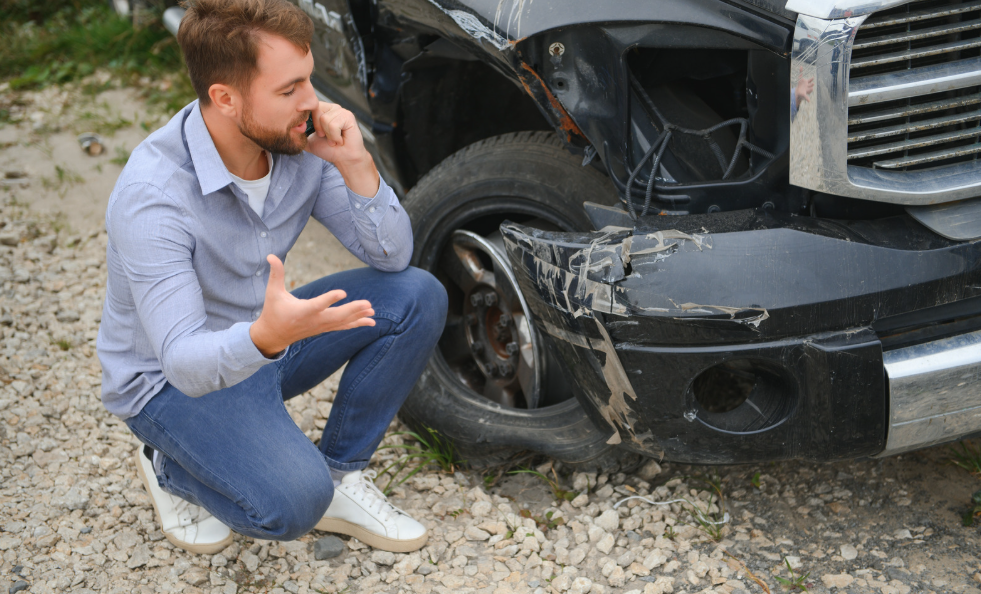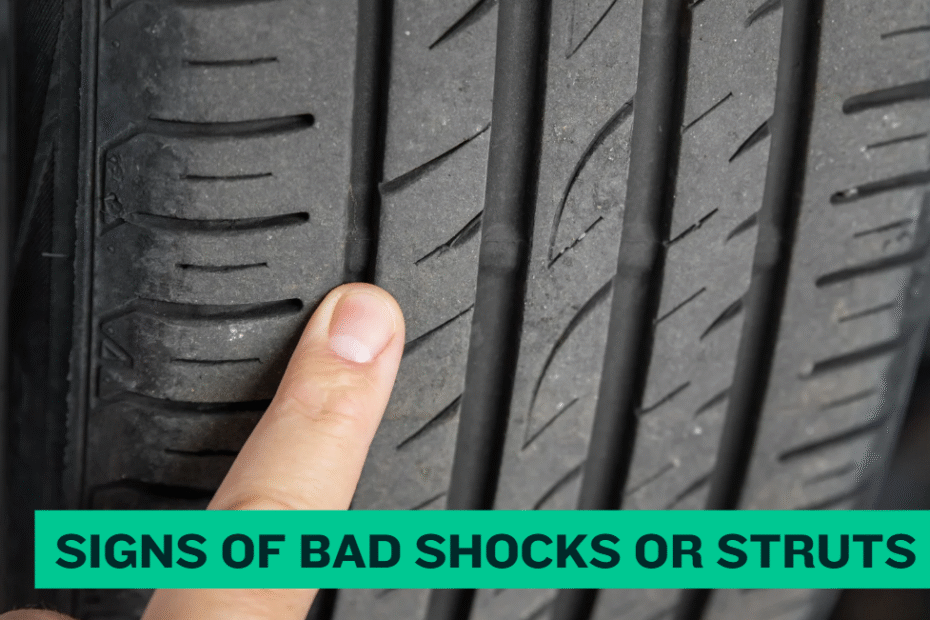Picture this. You’re driving down a smooth highway, but your car feels like it just came off a roller coaster.
It bounces too much, the steering feels loose, and your tires look worn in odd places. These are not random problems. They often point to bad shocks or struts.
I’ve dealt with this myself. At first, I thought it was just the road. Later I learned my suspension was crying for help.
Knowing the signs saved me from bigger repair bills.
In this article, I’ll share the simple clues anyone can spot.
You don’t need to be a mechanic. Just a little attention can keep your car safe and steady.
What Shocks and Struts Actually Do
Shocks and struts are like the cushions of your car. They keep the tires pressed to the road and stop the body from bouncing out of control.
Without them, your ride would feel rough and unsafe.
Shocks mostly control the up-and-down motion of the suspension.
Struts combine shocks with other parts like the spring and mount. They carry more weight and play a big role in steering.
Both are vital for a smooth ride, stable handling, and even tire wear.
Noise From Suspension Over Bumps
One of the first signs of bad shocks or struts is noise when you hit bumps.
It may sound like knocking, clunking, or squeaking. That’s the suspension telling you parts inside are loose or worn out.
I remember hearing a dull “thud” every time I drove over a pothole. At first, I ignored it. But the noise grew louder.
A quick inspection showed leaking shocks. The sound was the internal fluid and worn parts failing to do their job.
If you hear noises over bumps, don’t brush it off. Suspension noise often starts small but points to bigger issues if left unchecked.
Car Bounces After Hitting a Bump

Does your car keep bouncing after a speed bump? That’s another classic symptom.
Good shocks and struts settle the car quickly. Bad ones let it keep bouncing like a ball.
Here’s a simple test. Push down on the hood or trunk of your car and let go. If it bounces more than two times, the shocks are worn.
This small check can save you from losing control on the road.
Uneven Tire Wear From Suspension Issues
Look at your tires. Do you see bald spots on one side? Uneven patterns? This often comes from bad shocks or struts.
When suspension can’t hold the tires firmly, they don’t stay flat on the road. That uneven grip scrapes rubber away in strange shapes.
I once saw a friend replace tires twice in one year. The real issue wasn’t the tires. It was the struts. Once replaced, the new tires lasted much longer.
So, if your tires wear unevenly, don’t just blame the tire shop. Check the suspension.
Front End Dips When Braking
Bad struts or shocks can also make your car nose-dive when you brake. Instead of a smooth stop, the front end drops down sharply.
This is more than just uncomfortable. It reduces braking distance and increases the risk of an accident.
When I first noticed this in my car, it scared me. The car leaned forward so much it felt like I had less control. After replacing the front struts, braking became steady again.
Rear End Squats When Accelerating
The opposite problem happens when accelerating. If the rear end squats down too much, shocks at the back are likely weak. The weight shifts backward, making steering light and unsafe.
On highways, this can make lane changes risky.
A healthy suspension balances weight better, so the car stays level even when you press the gas hard.
Car Sways or Leans in Turns
Another clear sign is swaying in turns. A car with bad shocks or struts feels like it’s rolling too far to one side when you take a curve.
You may feel like the car is floating instead of gripping the road.
I felt this once driving on a winding road. Every turn made me nervous because the car leaned too much. That’s when I learned how vital suspension is for cornering.
Loose Steering and Poor Ride Quality
Bad shocks also make steering feel loose. The wheel may shake more than usual or not respond as firmly. Combined with a rough ride, it feels like the car has lost its confidence.
Good suspension gives you comfort and control. When both start to fade, it’s a clear sign that shocks or struts are failing.
Leaking Shock Absorbers
Sometimes the problem is easy to see. Check around your shocks. If you notice oil leaking, the seals have failed. Without fluid, shocks cannot work.
I once wiped the shock with a finger and found oil all over it. That was the final proof it needed replacement.
How Long Do Shocks and Struts Last?
Most shocks and struts last about 50,000 to 100,000 miles, depending on driving style and road conditions. If you often drive on rough roads, they may wear sooner.
I live in an area with many potholes, so mine wore out earlier than expected. Regular checks saved me from sudden surprises.
What Happens If You Drive With Bad Shocks?
Driving with bad shocks or struts isn’t just uncomfortable. It’s unsafe. Here’s what can happen:
Braking distance increases
Tires wear out faster
Steering control weakens
Car stability drops in emergencies
The longer you wait, the more parts get damaged. That means higher costs later.
How Much Does It Cost to Replace Shocks or Struts?
Shocks: $300–$600 for both
Struts: $400–$800 for both
Labor costs: $150–$300
Luxury or performance cars may cost more. But replacing them early saves money compared to fixing related damage later.
How to Check If Your Shocks or Struts Are Bad
Here are simple checks you can do:
Push down on each corner of the car and watch the bounce
Look for leaking oil around the shocks
Check tires for uneven wear
Listen for clunking or knocking over bumps
If you notice these, it’s time to visit a mechanic.
FAQ
How to tell if struts are bad?
If your car bounces too much, makes noise on bumps, or dips when braking, your struts may be worn out. A mechanic can confirm by inspection.
Do bad struts cause uneven tire wear?
Yes. Bad struts can’t hold the tire flat on the road, leading to bald spots or uneven wear patterns.
Why does my car bounce after hitting a speed bump?
That usually means the shocks have lost their strength. Good shocks stop bouncing quickly, bad ones let it continue.
What happens if you drive with bad shocks?
You risk poor handling, longer braking distance, uneven tires, and unsafe driving. It’s best to replace them soon.
How long do shocks and struts last?
They usually last 50,000–100,000 miles, but rough roads or heavy loads can shorten their life.
How much does it cost to replace shocks and struts?
On average, $400–$800 for struts and $300–$600 for shocks, including labor.
Finally
Bad shocks or struts show signs early. Noise, bounce, and uneven tire wear are all warnings. If you pay attention, you can fix them before they cause bigger trouble.
